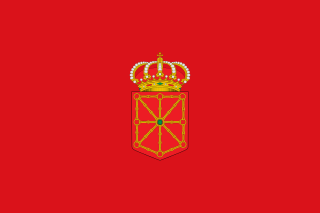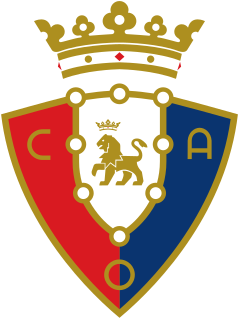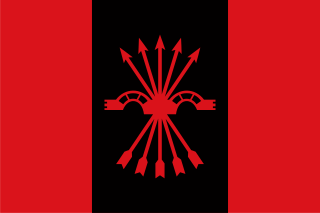| Buried | |
|---|---|
| Artist | Abel Azcona |
| Year | 2015 |
| Medium | Performance Art |
| Location | Pamplona |
Buried is a conceptual and performative work of critical, social and political content by artist Abel Azcona. The performance artwork was created in 2015 through a public and participatory performance, or happening, on the esplanade of Franco's Monument to the Fallen in Pamplona. [1] Azcona invited dozens of relatives of Republicans who were shot, persecuted or disappeared during the Spanish Civil War. Descendants of victims make up the installation in a row in front of the monument, all symbolically buried with soil from the garden of one of the participants, where his relatives had been shot. [2] In 2016 the city of Pamplona invited Azcona to show his work inside the Monument and the project was recreated inside the Monument, which had been converted into an exhibition hall, under the name of Unearthed: A retrospective view on the political and subversive work of the artist Abel Azcona. [3] The exhibition brought together the Buried project and fragments of all of Azcona's works. [4]
There are symbols that cannot be covered. The Monument to the Fallen of Pamplona is a clear example. Fighting this symbol with another is what Navarrese artist Abel Azcona has proposed, known for his performance, sometimes controversial and often linked to the body. In this case, Azcona does not propose this new art exhibition as a war between symbols, but as an invitation to arouse feelings and, also, as a claim. For him, it is about inciting memory, individual and collective (and, therefore, historical).
— Association for the Recovery of Historical Memory [5]
In 2016, Azcona coordinated a new performative action, or happening, with relatives of those who were shot in the Pozos de Caudé . [6] Under the name of Desafectos, Azcona formed a wall with the relatives as a complaint, next to the wells outside the city of Teruel, [7] where more than a thousand people had been shot and thrown into the wells over the course of three days during the Civil War.

Navarre, officially the Chartered Community of Navarre, is an autonomous community and province in northern Spain, bordering the Basque Autonomous Community, La Rioja, and Aragon in Spain and Nouvelle-Aquitaine in France. The capital city is Pamplona.

The festival of San Fermín is a week long, historically rooted celebration held annually in the city of Pamplona, Navarra, Spain. The celebrations start at noon on 6 July, when the party starts with the setting off the pyrotechnic and continue until midnight, on 14 July, with the singing of the Pobre De Mi. While its most famous event is the encierro, or the running of the bulls, at 08:00 CEST from 6 to 14 July, the festival involves many other traditional and folkloric events. It is known locally as Sanfermines and is held in honour of Saint Fermin, the co-patron of Navarre. Its events were central to the plot of The Sun Also Rises, by Ernest Hemingway, which brought it to the general attention of English-speaking people. It has become probably the most internationally renowned fiesta in Spain. Over 1,000,000 people come to participate in this festival.

Club Atlético Osasuna or simply Osasuna, is a Spanish football team based in Pamplona, Navarre.

Javier Sierra Albert is a journalist, writer and researcher who studied journalism at the Universidad Complutense de Madrid.

The symbols of Francoism were iconic references to identify the Francoist State in Spain between 1936 and 1975. They serve as visual illustrations for the ideology of Francoist Spain. Uniforms were designed for men and women that combined elements of the earlier Falangist and Carlist uniforms. The state developed new flags and escutcheons based on the traditional heraldry of the monarchy, but now associated with the state. The emblem of five arrows joined by a yoke was also adopted from earlier Spanish symbology, but after 1945 the arrows always pointed upward. This emblem appeared on buildings, plaques and uniforms.

Ignacio Baleztena Ascárate was a Navarrese folk customs expert, a Carlist politician and soldier
José Manuel Mateo Azcona is a Spanish retired footballer who played as a central defender, and a current manager.

Alfred García Castillo is a Spanish singer. He gained national recognition when he took part in series nine of the reality television talent competition Operación Triunfo, where he finished in fourth place, and also represented Spain in the Eurovision Song Contest 2018 in Lisbon, Portugal, alongside Amaia Romero, with the song "Tu canción", finishing in twenty-third place.

The Citadel of Pamplona or The New Castle is an old military renaissance fort, constructed between the 16th and 17th centuries in the city of Pamplona, the capital of the Navarre Community (Spain). At present a large part of the fort it is still standing in a public park with cultural activities taking place in its buildings.

Pain and Glory is a 2019 Spanish drama film directed and written by Pedro Almodóvar. It stars Antonio Banderas, Asier Etxeandia, Penélope Cruz, Julieta Serrano and Leonardo Sbaraglia.

Carmen Castillo García is a Spanish Professor Emeritus of Classical Philology at the University of Navarra in Pamplona. She is the second woman to obtain a Latin Philology Chair in Spain. She is an expert on the Roman province of Baetica in southern Iberia.
The 34th Goya Awards ceremony, presented by the Academy of Cinematographic Arts and Sciences (AACCE), honored the best in Spanish films of 2019 and took place at the Palacio de Deportes José María Martín Carpena in Málaga on January 25, 2020. The ceremony was televised in Spain by Televisión Española (TVE) and was hosted for the second consecutive year by television presenter and comedian Andreu Buenafuente and actress Silvia Abril. It was also televised for the international public by the TVE Internacional channel. It was the third overall time and the second consecutive year that the ceremony was held outside of Madrid: previously the 14th edition and the 33rd edition had taken place in Barcelona and Seville respectively. It was also the second consecutive year that the ceremony takes place in Andalusia.

Abel Azcona is a Spanish artist, specializing in performance art. His work includes installations, sculptures, and video art. He is known as the "enfant terrible" of Spanish Contemporary Art. His first works dealt with personal identity, violence and the limits of pain; his later works are of a more critical, political and social nature.
Amen, more commonly known as The Pederasty, is a conceptual, critical and process artwork by Abel Azcona. Over a period of several months, Azcona attended Eucharists in churches and parishes that were linked to his own childhood. In the churches, the artist keeps the wafer or consecrated host given to the attendees of the communion. He gathered two hundred and forty-two wafers, which was the number of cases of pederasty reported in the north of Spain during the previous decade. With the wafers, he made a work in which the word Pederasty could be read. The work was first exhibited at a central Madrid art gallery in the summer of 2015.

Empathy and Prostitution is a conceptual and performative work of critical and biographical content by artist Abel Azcona. Azcona was inspired by his biological mother, a prostitute, and sought to empathise with her and with the moment of his own conception. Azcona offered himself naked to the galleries' visitors on a bed with white sheets, so that they could exchange intimacy or have sexual relations with him.

The Death of The Artist is a conceptual and performative work of critical content by artist Abel Azcona. The artwork was both a continuation of his earlier works and closure of the series, being performed in 2018 in the lobby of the Circulo de Bellas Artes in Madrid. His previous works had caused Azcona to receive threats, persecution, and acts of violence. By letter, the artist invited the organizations, groups, and entities that had threatened his life to the installation, where a loaded firearm was offered and Azcona stood exposed on a raised platform.

The Fathers is a conceptual and performative work of critical and biographical content by artist Abel Azcona. The Fathers was first performed in 2016 in Madrid with the final performance, also in Madrid, in 2017 in an exhibition format. The durational piece included dozens of female survivors of prostitution who gave a physical description of their last client. On the other side of a ten-meter-long table, composite artists listened to them and drew images of the clients. The performance generated dozens of portraits which, at the closing of the work in 2017, were exhibited with the premise that any of them could be Azcona's father. The biographical work creates a critical discourse with prostitution and its inheritance, and in the case of Azcona himself, of an unknown father, having been conceived during an act of prostitution.
Abel Azcona, the son of a prostituted woman who is looking for his whoremonger father, because it perfectly summarizes everything that the patriarchy has built on their subordination and for our autonomy. Abel represents the aching son of an unknown father. All of us are those men who walk on their backs. To those who do not see their faces until the end. Those parents who sign unwritten covenants and who leave their semen springs across the planet. Those who rent vaginas, wombs, and maids. It is urgent to face those who prefer to remain installed in comfort. Only in this way will it be possible to turn our face towards the camera, without fear of being recognized in a robot portrait of a whoremonger father. Without fear of the mirror returning the image of a monster.
Eating is a conceptual and performative work of critical, polemical and political content by artist Abel Azcona. Also known as Eating a Koran, Eating a Torah and Eating a Bible.
The Shadow is a conceptual and performative work of critical, social and political content by artist Abel Azcona. In The Shadow, Azcona denounced cases of child abuse in a piece in which the survivors are the protagonists. In the work, Azcona presented more than two hundred actual cases of pedophilia in museums and galleries in various cities in Spain. At each show, Azcona gave a live performance from a wooden swing of the experiences of the survivors.

The Shame,, is a conceptual, critical and process artwork by Abel Azcona. Developed along the West Bank Wall in 2018, in The Shame Azcona installed original fragments of the Berlin Wall along the IsraelI wall in the West Bank, which forms part of the barrier built throughout Israel to separate the Palestinian lands. Azcona made a metaphorical critique by merging both walls in the work. The actual installation, as if it were a piece of land art, currently remains along the wall, and has been exhibited in different countries through photographic and video art. He was also criticized by the State of Israel for the piece The Shame, where the artist installed fragments of the Berlin Wall along the West Bank Wall.